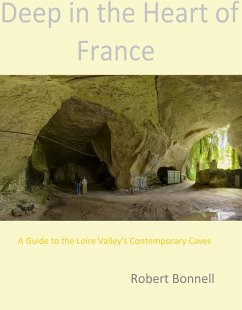It is not common knowledge, even elsewhere in France, that the Loire Valley, that natural dividing line between the north and the south of France, is riddled with caves. Almost all of them are human creations, cavities hollowed out of the earth in the course of the last two millennia or more. Originally some caves were excavated to serve as refuges from marauders, others as stone quarries, others as mines. Once created, a variety of uses could be found for a cave, not least of which was as habitation. In earlier times, a broad cross-section of social classes lived in cave habitations, but by the 19th century living in this sort of digs had been relegated to the poor. By the mid-20th century only a handful of cave dwellers hung on underground, and to live in a cave was considered something of a disgrace. There were other uses for the caves, though, once the extraction of the stone had ceased. Wineries quickly come to mind. Caves were used to make and age still wines, of course, but the sparkling wine industry, established in the Loire Valley in the early 19th century, put large sections of abandoned caves to use for the aging of its product. Mushroom cultivation, also brought to the Loire Valley in the 19th century, was a major industry in the region until fairly recently. A once-thriving silk industry often used caves to raise silkworms. At the beginning of the 21st century the wineries are still going strong, but most of the other cave-based industries have either died out or have been reduced considerably. Loire Valley caves are now much more likely to be reborn as tourist sites (restaurants, lodgings, museums) or once again, habitation. New technologies and a newfound respect for caves' ecological qualities have led to a renaissance of cave living. The troglodyte lifestyle appears to have a bright future.
Dieser Download kann aus rechtlichen Gründen nur mit Rechnungsadresse in A, B, CY, CZ, D, DK, EW, E, FIN, F, GR, H, IRL, I, LT, L, LR, M, NL, PL, P, R, S, SLO, SK ausgeliefert werden.









